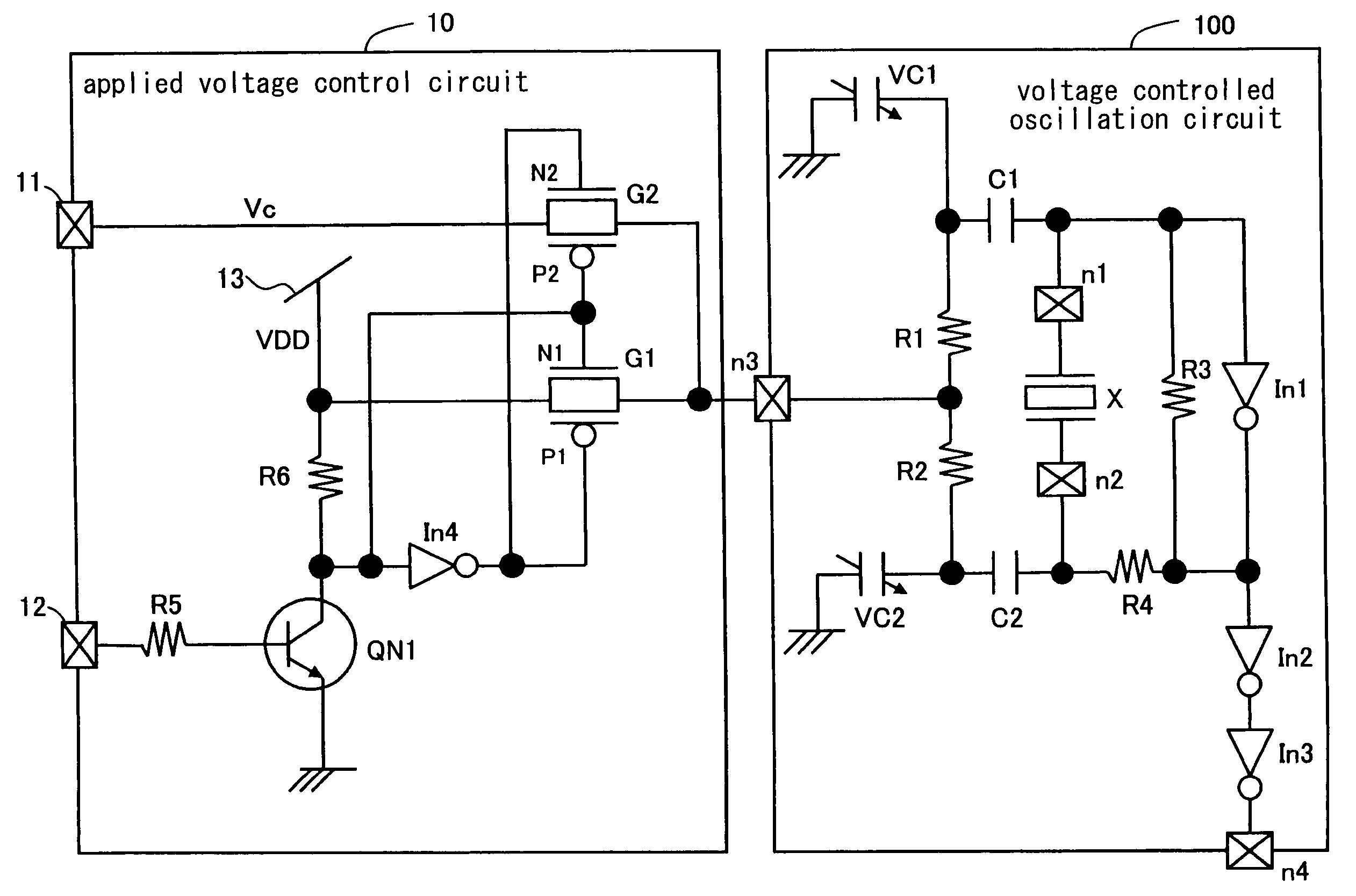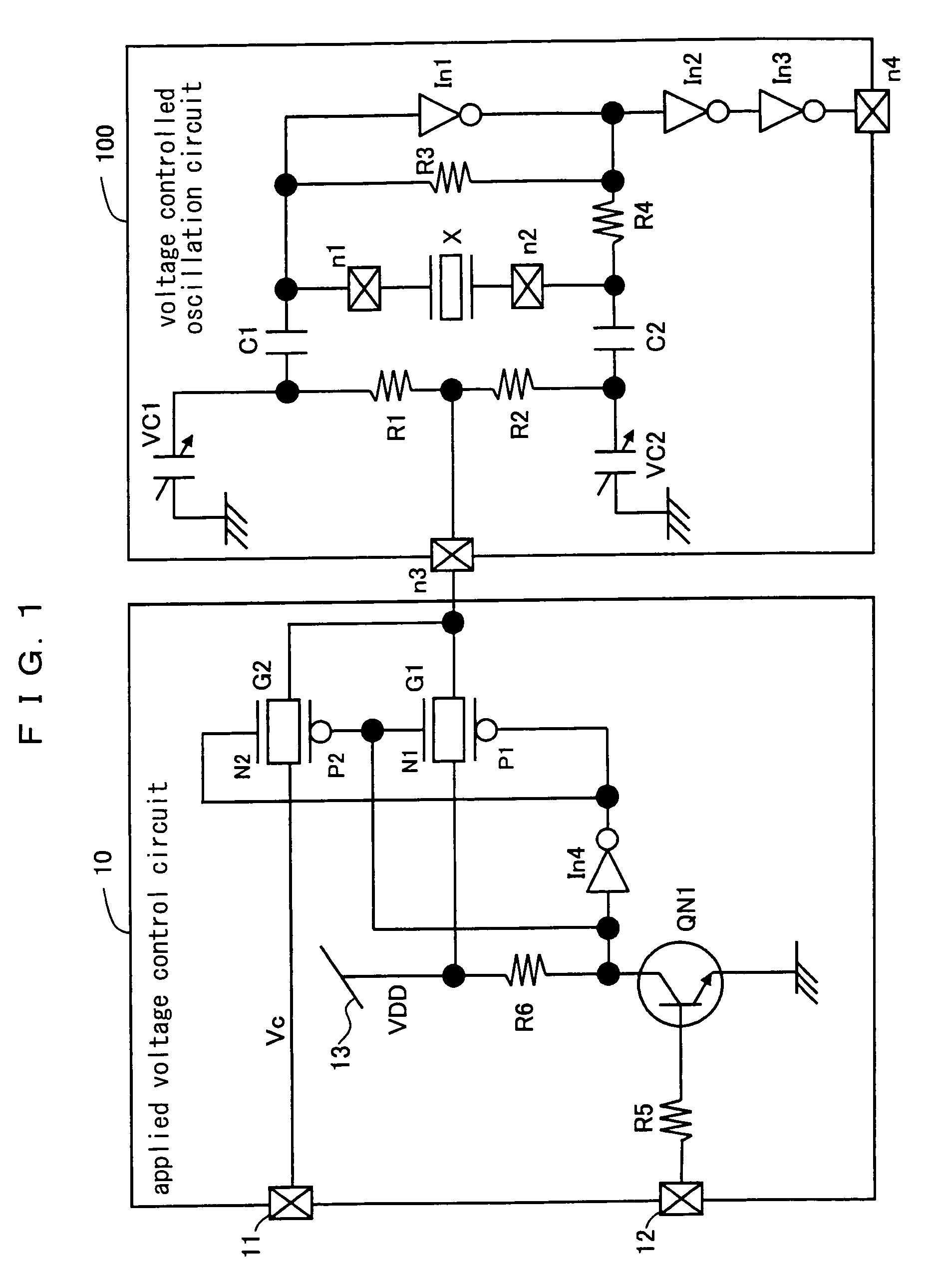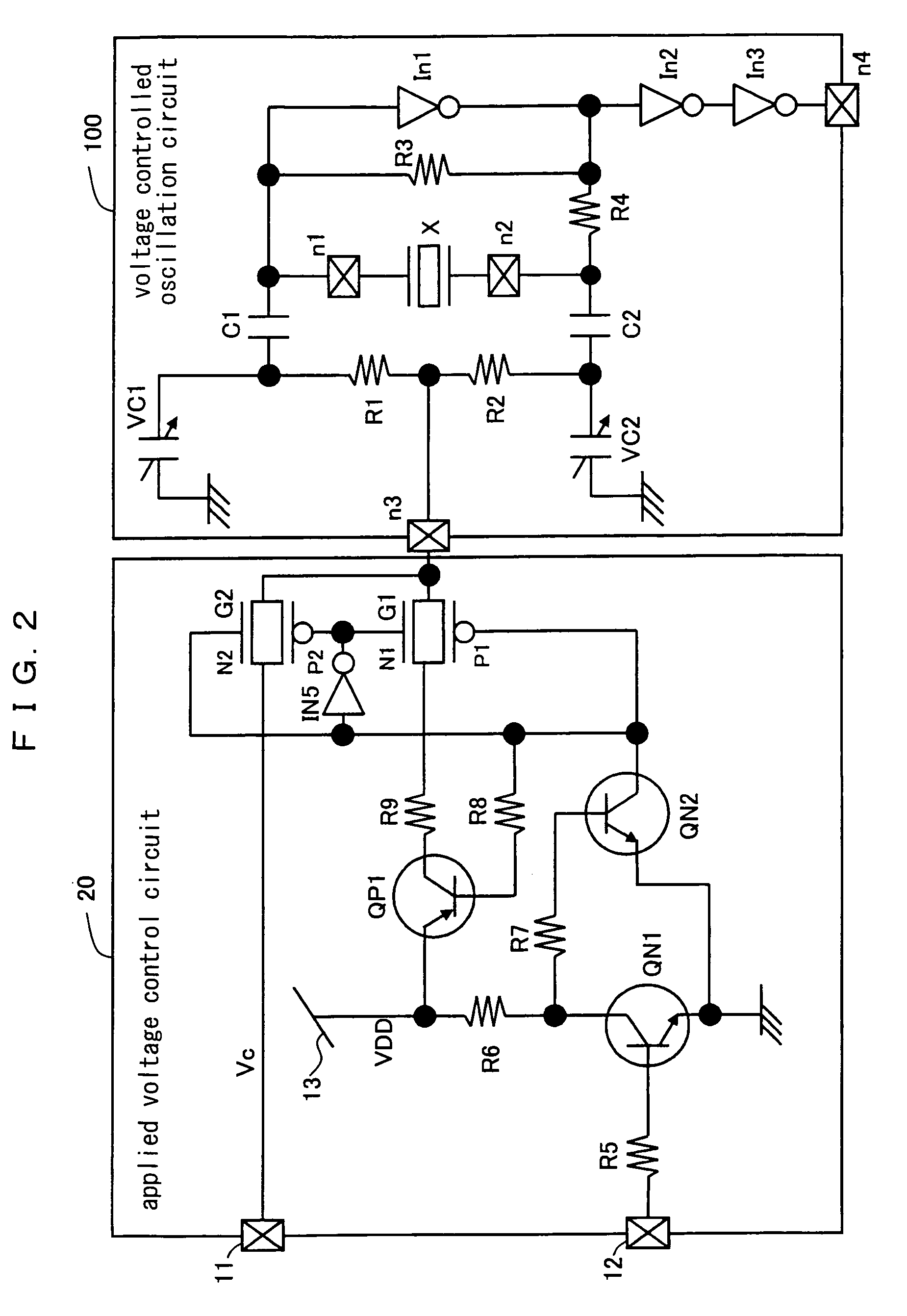Applied voltage control circuit for voltage controlled oscillation circuit
a voltage control circuit and voltage control technology, applied in the direction of oscillation generators, pulse automatic control, generator starters, etc., can solve the problem of not meeting the minimum allowable value to recognize the “h” level of the transmission gate, and the “h” level of the general purpose port is long
- Summary
- Abstract
- Description
- Claims
- Application Information
AI Technical Summary
Benefits of technology
Problems solved by technology
Method used
Image
Examples
first preferred embodiment
[0069]FIG. 1 is a circuit diagram illustrating configurations of an applied voltage control circuit 10 for a voltage controlled oscillation circuit and a voltage controlled oscillation circuit 100 according to a first preferred embodiment of the present invention.
[0070]The voltage controlled oscillation circuit 100, which is configured in a manner similar to that of the conventional technology shown in FIG. 10, is not described below again.
[0071]The applied voltage control circuit 10 comprises, as main components thereof, a first transmission gate G1, a second transmission gate G2, and an NPN transistor QN1 for switching an applied voltage. The first transmission gate G1 determines application / disconnection of a power-supply voltage VDD with respect to a control input terminal n3 of the voltage controlled oscillation circuit 100. The second transmission gate G2 determines application / disconnection of a voltage level Vc of a control signal from a voltage control terminal 11 with resp...
second preferred embodiment
[0079]A second preferred embodiment of the present invention realizes an operation achieving a higher speed in comparison to the first preferred embodiment.
[0080]FIG. 2 is a circuit diagram illustrating configurations of an applied voltage control circuit 20 for a voltage controlled oscillation circuit and a voltage controlled oscillation circuit 100 according to the second preferred embodiment.
[0081]In the present embodiment, the inverter In4 according to the first preferred embodiment is omitted, and an NPN transistor QN2, a PNP transistor QP1 and an inverter In5 are additionally provided.
[0082]A base of the NPN transistor QN2 is connected to a collector of the NPN transistor QN1 via a resistance R7, an emitter thereof is grounded, and a collector thereof is connected to a base of the PNP transistor QP1 via a resistance R8. An emitter of the PNP transistor QP1 is connected to the power-supply voltage terminal 13 to which the power-supply voltage VDD is applied, and a collector the...
third preferred embodiment
[0090]FIG. 4 is a circuit diagram illustrating configurations of an applied voltage control circuit 30 for a voltage controlled oscillation circuit and a voltage controlled oscillation circuit 100 according to a third preferred embodiment of the present invention.
[0091]The first transmission gate G1 is inserted between the control input terminal n3 of the voltage controlled oscillation circuit 100 and the power-supply voltage terminal 13 to which the power-supply VDD is supplied. The second transmission gate G2 is inserted between the control input terminal n3 and the voltage control terminal 11 to which the voltage level Vc of the control signal is applied. The general purpose terminal 12 for external control is connected to the gate of the PMOS transistor P1 of the first transmission gate G1 and the gate of the NMOS transistor N2 of the second transmission gate G2. The general purpose terminal 12 is further connected to the gate of the NMOS transistor N1 of the first transmission ...
PUM
 Login to View More
Login to View More Abstract
Description
Claims
Application Information
 Login to View More
Login to View More - R&D
- Intellectual Property
- Life Sciences
- Materials
- Tech Scout
- Unparalleled Data Quality
- Higher Quality Content
- 60% Fewer Hallucinations
Browse by: Latest US Patents, China's latest patents, Technical Efficacy Thesaurus, Application Domain, Technology Topic, Popular Technical Reports.
© 2025 PatSnap. All rights reserved.Legal|Privacy policy|Modern Slavery Act Transparency Statement|Sitemap|About US| Contact US: help@patsnap.com



